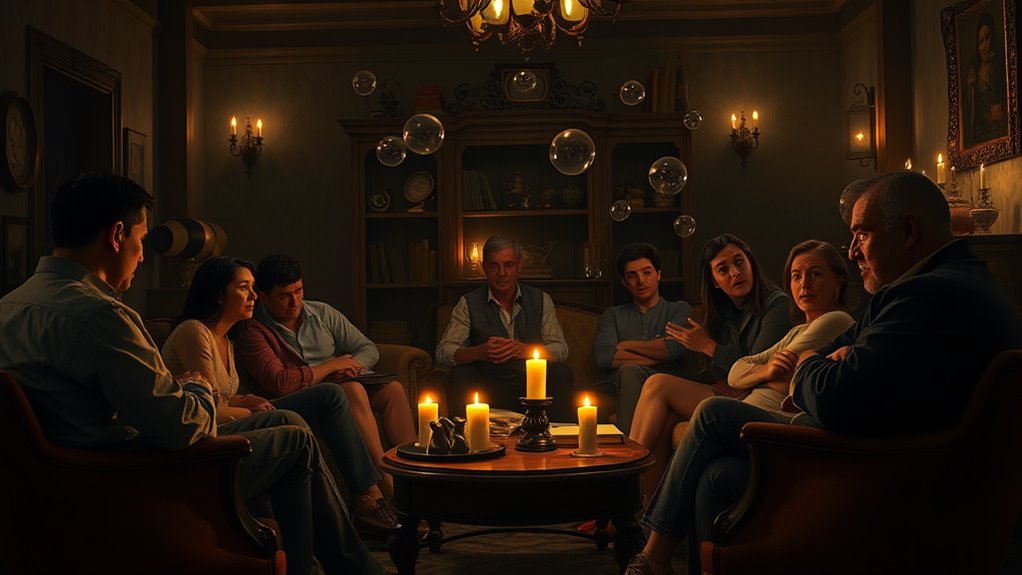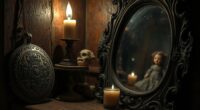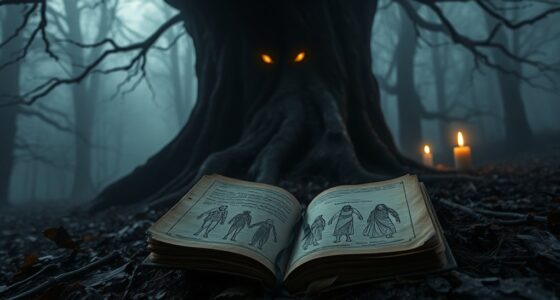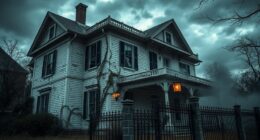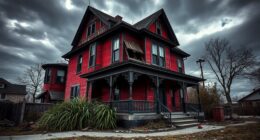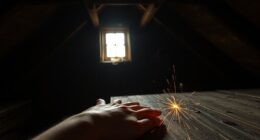In the great ghost debate, you’ll find believers sharing personal stories and cultural traditions that shape their views, while skeptics look for scientific explanations like environmental factors and psychological influences. Media exposure and online communities amplify these ideas, making the debate lively and complex. Whether you’re convinced or not, understanding how perception, evidence, and tradition influence opinions can deepen your perspective—if you keep exploring, you’ll uncover even more about this enduring mystery.
Key Takeaways
- Personal testimonials and cultural traditions reinforce belief, while scientific explanations attribute sightings to environmental and psychological factors.
- Online communities and media influence shape public perceptions, fueling ongoing debates between believers and skeptics.
- Visual and video evidence often contain inconsistencies, leading skeptics to question the authenticity of paranormal claims.
- Psychological biases and perception tricks contribute to the persistence of ghost sightings despite rational explanations.
- The debate reflects deeper cultural fears, hopes, and the human tendency to seek meaning in unexplained phenomena.
Personal Encounters and Testimonies
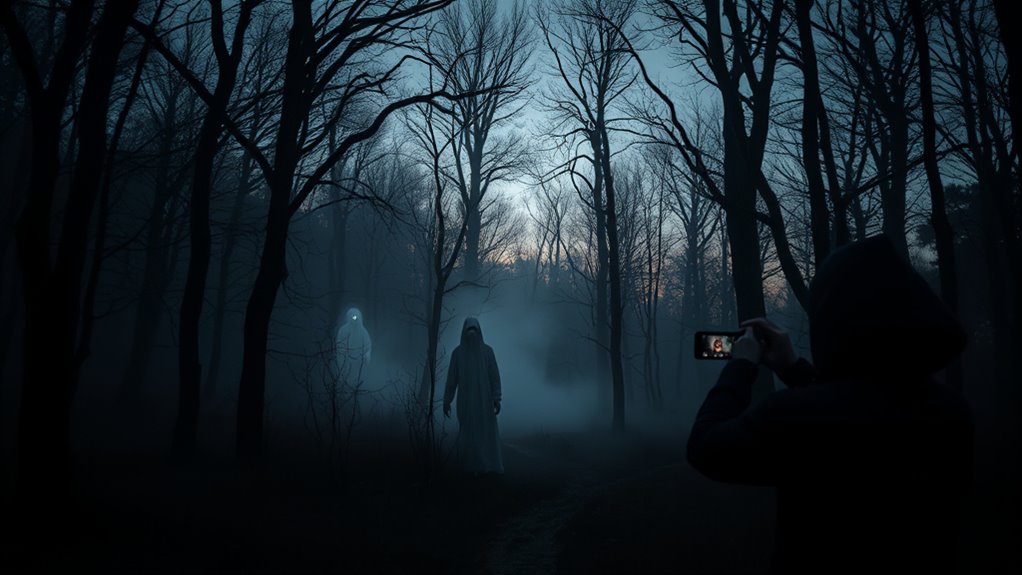
Have you ever wondered if ghost sightings are real? Many people share personal testimonials that seem to confirm their encounters with the supernatural. These stories, often passed down through word of mouth or shared online, serve as anecdotal evidence supporting the existence of spirits. You might hear about a chilling presence in an old house or unexplained voices in abandoned places. While skeptics dismiss these accounts as imagination or coincidence, believers see them as proof of ghostly activity. Personal encounters are powerful because they come straight from individuals who swear by their experiences. Even if you remain skeptical, these heartfelt stories keep the debate alive, fueling curiosity and wonder about what might lie beyond our understanding. Interestingly, some scientific studies explore psychological factors that influence perceptions of paranormal events, helping to shed light on why these experiences are so compelling. Additionally, cognitive biases can play a significant role in shaping how people interpret ambiguous stimuli as supernatural phenomena. Furthermore, understanding the psychological effects of trauma and grief can provide insight into why some individuals might be more prone to experiencing or interpreting such encounters. Recent research into neuropsychology suggests that certain brain activity patterns may also contribute to these perceptions, offering another perspective on the phenomenon. Moreover, the influence of environmental factors such as lighting, sounds, and atmospheric conditions can also affect how these encounters are perceived and remembered.
Scientific Explanations and Rational Arguments
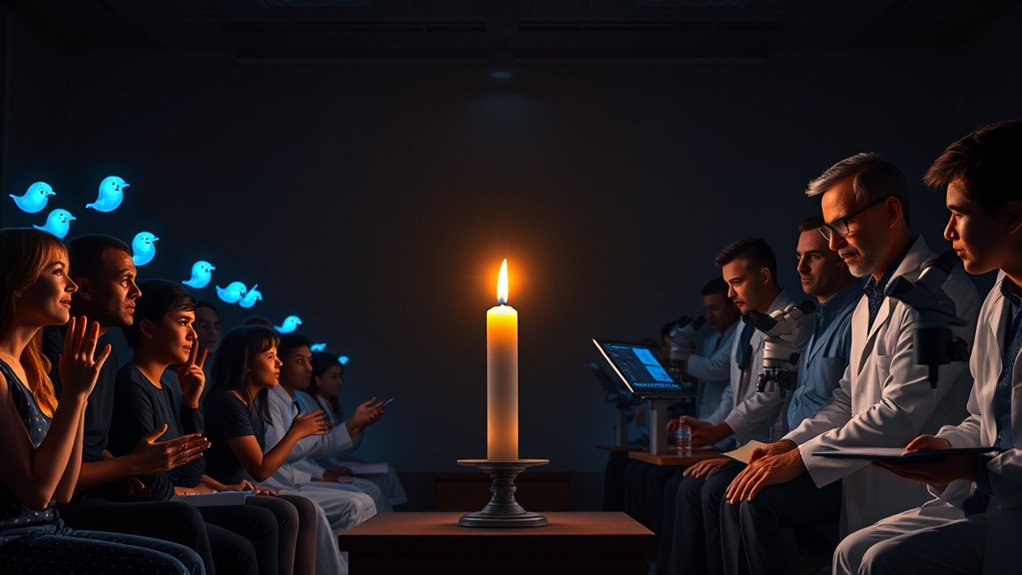
You can explore how psychological perception factors, like fear or suggestion, influence ghost sightings. Environmental anomalies, such as drafts or electromagnetic fields, are also examined for possible explanations. Applying the scientific method helps test these ideas objectively and separates fact from fiction. Additionally, understanding how visual perception can be manipulated by lighting conditions or visual illusions is crucial in evaluating ghost claims. Research into environmental factors, such as unusual electromagnetic activity, offers alternative explanations for some paranormal reports. Recognizing the role of scientific research in these investigations helps distinguish credible evidence from false perceptions. Moreover, credibility of evidence plays a vital role in assessing the reliability of reported sightings and experiences. Introducing specialized filtration techniques can also help identify and eliminate false signals caused by environmental interference, further clarifying the validity of paranormal investigations.
Psychological Perception Factors
Psychological perception factors play a significant role in how people interpret unexplained phenomena, often leading individuals to believe they’ve experienced ghostly encounters. Your visual perception can be easily fooled by dim lighting, shadows, or unfamiliar surroundings, creating illusions of apparitions. visual perception itself is susceptible to illusions that can mimic ghostly figures, further contributing to misinterpretations of ordinary stimuli as supernatural phenomena. External influences, such as environmental conditions, can also distort sensory input and reinforce these perceptions. The psychological predisposition of individuals to seek explanations for mysterious events can heighten their susceptibility to believing in paranormal activity. Cognitive biases, like confirmation bias, also influence your beliefs—once you suspect a ghost, you’re more likely to interpret ambiguous cues as paranormal. These mental shortcuts shape how you process sensory information, making you more prone to perceive supernatural activity even when none exists. Understanding these psychological factors reveals that many ghost sightings may stem from your mind’s tendency to fill in gaps or interpret stimuli based on expectations, rather than actual paranormal events. Additionally, perceptual illusions can distort what you see, heightening the likelihood of misinterpreting ordinary stimuli as supernatural phenomena. Furthermore, sensory manipulation through environmental factors such as sound or temperature changes can heighten these illusions and perceptions of paranormal activity.
Environmental Anomalies Explored
Many environmental factors can create sounds, sights, and sensations that are mistaken for paranormal activity. Environmental anomalies, such as drafts, electromagnetic fields, or mold, can trigger unexplained phenomena that seem otherworldly. For example, creaking floors or sudden temperature drops might be attributed to ghostly presence, but science offers natural explanations. Unusual noises often result from settling structures or nearby wildlife, while visual effects like flickering lights may stem from faulty wiring or electrical interference. Recognizing these environmental anomalies helps you understand that many supposed paranormal encounters have rational causes. Additionally, understanding synthetic wig care can prevent damage that might otherwise be misinterpreted as paranormal activity when styling or handling wigs. By examining the physical environment carefully, you can often identify the true source of these unexplained phenomena, reducing misinterpretations and separating fact from fiction.
Scientific Method Application
Applying the scientific method to paranormal claims involves systematically analyzing evidence and testing hypotheses to determine their validity. You start by gathering observable data and seeking empirical validation through controlled experiments or careful observation. Next, you formulate specific hypotheses about the paranormal event, guaranteeing they are testable. By conducting experiments or collecting additional evidence, you can perform hypothesis testing to see if the data supports or refutes your initial assumptions. This process helps eliminate biased explanations and separates genuine phenomena from illusions or misinterpretations. Using the scientific method ensures that claims are evaluated objectively, relying on evidence rather than anecdote or speculation. Ultimately, this approach fosters rational debate and advances our understanding of unexplained experiences by emphasizing empirical validation and rigorous testing.
Analyzing Photographs and Video Evidence
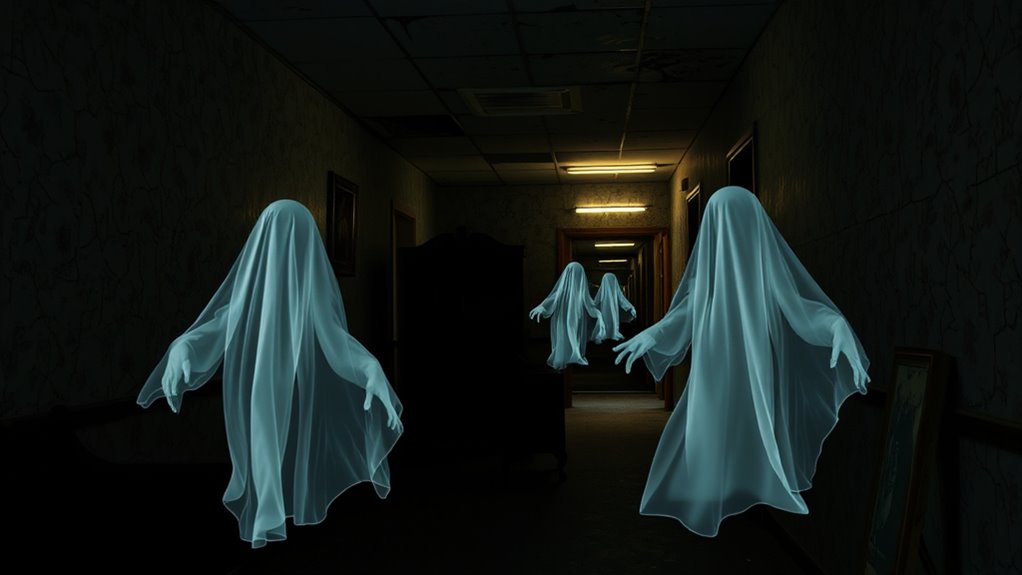
When evaluating photographs and video footage of supposed ghostly encounters, it is vital to approach the evidence with a critical eye. Photo analysis involves examining details like shadows, reflections, and potential digital alterations that could explain unusual visuals. For video evidence, look for inconsistencies such as sudden movements, editing signs, or unexplained anomalies. Always consider the source and context of the footage, questioning whether it’s been manipulated or taken out of context. Rely on forensic techniques and expert opinions when possible to assess authenticity. Remember, many so-called ghost images can be explained by camera errors, lighting, or pareidolia. Approaching such evidence skeptically helps separate genuine phenomena from hoaxes or misinterpretations. Critical analysis is key to understanding what’s really behind these visual claims.
Historical Accounts and Cultural Perspectives
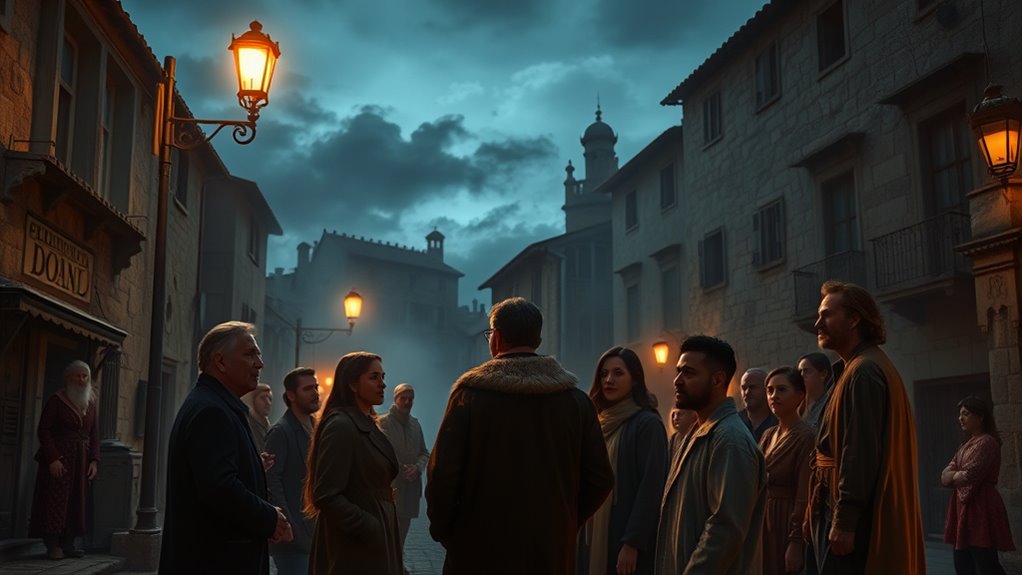
You’ll find that ancient ghost legends reflect deep-rooted cultural fears and hopes. These stories often shape rituals and beliefs across different societies. Exploring historical sightings reveals how perceptions of spirits have evolved over time and across cultures.
Ancient Ghost Legends
Have ancient ghost legends truly persisted across centuries, shaping cultures and beliefs? You’ve probably heard stories of ancient spirits that have been passed down through generations, forming the foundation of ghost lore. These legends often describe restless souls, vengeful apparitions, or protective spirits, reflecting the values and fears of early societies. Many cultures recorded encounters with ghosts in their historical texts, giving credibility to their existence in people’s minds. These accounts helped embed the idea of spirits into traditions, rituals, and folklore. Whether these stories are literal truths or symbolic narratives, they reveal how ancient communities understood life, death, and the afterlife. Ghost legends from antiquity continue to influence modern perspectives, fueling both belief and skepticism today.
Cultural Rituals and Beliefs
Throughout history, cultures have embedded ghost beliefs deeply into their rituals and daily practices, shaping how you interpret death and the afterlife. These belief systems influence ceremonies like funerals, offerings, and festivals, reflecting unique views on spirits. For example:
| Culture | Ritual Practice |
|---|---|
| Chinese | Ancestor worship with offerings |
| Mexican | Day of the Dead celebrations |
| Japanese | Obon festival for spirits |
| African | Spirit possession rituals |
| European | Ghostly folklore in storytelling |
These cultural rituals reveal diverse perspectives on spirits and the afterlife, demonstrating how belief systems shape community responses to death. Whether to honor, communicate, or ward off spirits, these practices illustrate the enduring power of ghost beliefs across the world.
Historical Paranormal Sightings
Historical accounts of paranormal sightings reveal how different cultures have interpreted strange phenomena across centuries. These stories often reflect the historical context of their time, shaped by societal beliefs and spiritual frameworks. Archaeological discoveries, such as ancient amulets or inscriptions, provide tangible evidence that some cultures documented encounters with spirits or supernatural events. For example, ancient Egyptian tombs contain depictions of ghostly figures, while medieval European texts describe apparitions and hauntings. These historical sightings help us understand how perceptions of the paranormal evolved and how different societies explained unexplained phenomena. Whether viewed as spiritual messages or cultural stories, these accounts continue to influence modern beliefs and skepticism about paranormal activity.
Psychological Factors Influencing Belief
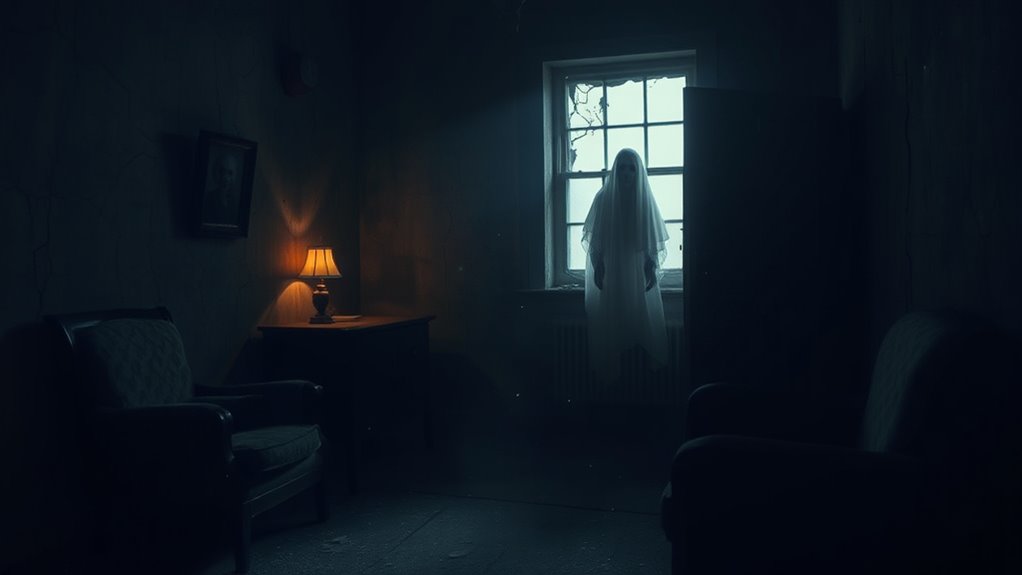
Psychological factors play a significant role in shaping why people believe in ghosts, often influencing perceptions more than any external evidence. Mass hysteria can spread fear and suggest supernatural presence, making individuals more likely to interpret ambiguous events as paranormal. Cognitive biases also contribute; for example, confirmation bias causes you to notice and remember experiences that support your beliefs while ignoring disconfirming evidence. The human mind naturally searches for patterns and meaning, especially in uncertain situations, which can lead you to see ghosts where none exist. These psychological tendencies make belief in ghosts a powerful and personal experience, often rooted in your subconscious processes rather than objective reality. Recognizing these influences helps explain why ghost sightings persist across cultures and generations.
The Role of Media and Popular Culture
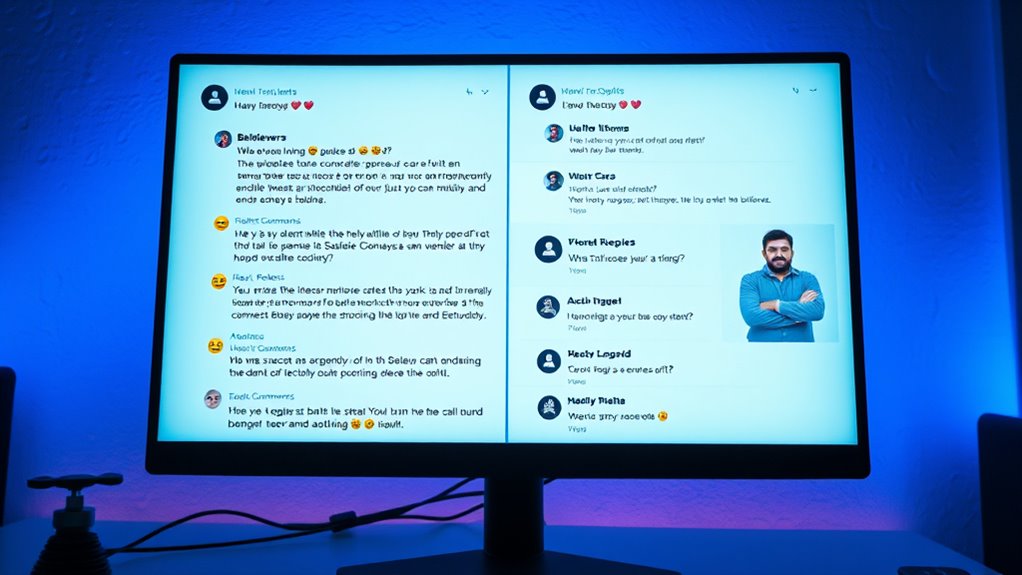
How much influence does media and popular culture have in shaping your beliefs about ghosts? It’s significant. Media influence and pop culture often portray ghosts as mysterious, scary, or supernatural beings that appear on command. This creates a powerful image in your mind. Consider these points:
Media and pop culture shape your beliefs about ghosts as mysterious, scary beings that appear on command.
- TV shows and movies often depict ghosts as spooky entities, reinforcing fear.
- Popular legends and stories spread through media shape perceptions.
- Paranormal reality shows sensationalize ghost encounters, blurring fact and fiction.
- Social media amplifies stories, making ghost sightings seem more common.
These elements influence how you interpret ghost stories and your expectations about the supernatural. Media and pop culture don’t just entertain—they mold your beliefs about what’s real and what’s not.
The Impact of Online Communities and Discussions
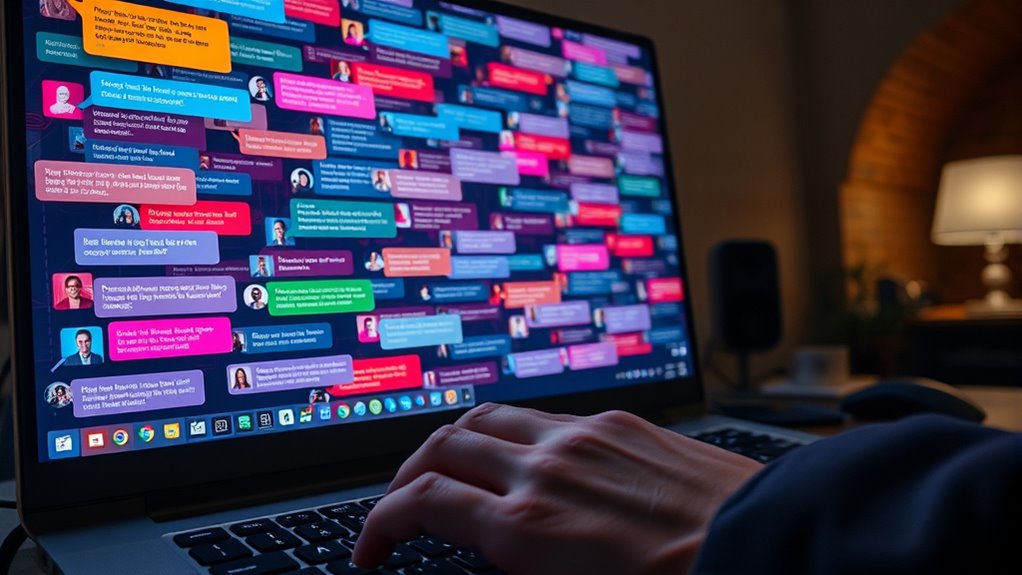
Have you ever noticed how online communities and discussions shape your beliefs about ghosts? They create a space where virtual hauntings and digital manifestations become more than stories—you start to see them as real. When you read shared experiences, photos, or videos, it’s easy to get caught up in the mystery. These discussions can reinforce skepticism or deepen belief, depending on your perspective. Online forums and social media allow believers to exchange evidence and personal encounters, making ghost phenomena feel more tangible. Conversely, skeptics challenge these claims, pushing for scientific explanations. This dynamic amplifies the debate, making online communities powerful influences on how you interpret ghostly activity. Ultimately, your perceptions are shaped by the collective voice of those sharing and scrutinizing ghost stories in digital spaces.
Frequently Asked Questions
What Are the Most Compelling Unseen Phenomena Reported in Ghost Encounters?
You’re curious about the most compelling unseen phenomena reported in ghost encounters. Many believe paranormal evidence includes unexplained whispers, shadowy figures, and cold spots that defy logic. These unseen phenomena often leave witnesses with chills, suggesting something beyond ordinary perception. While skeptics question their authenticity, believers find these subtle signs powerful, fueling ongoing debates about whether these phenomena are real or illusions, making ghost encounters endlessly fascinating.
How Do Different Cultures Interpret and Explain Ghost Sightings?
Imagine walking through a village where ancestors’ spirits are believed to guide daily life. Different cultures interpret ghost sightings through their unique lenses—some see them as messages from loved ones, others as unsettled spirits needing closure. Cultural beliefs and spiritual traditions shape these explanations, blending folklore and religion. These diverse perspectives reveal how deeply our understanding of ghosts varies, reflecting the rich tapestry of human spirituality and cultural identity.
Can Scientific Methods Definitively Prove or Disprove Ghost Existence?
You wonder if scientific methods can definitively prove or disprove ghost existence. While empirical evidence is essential, experiments often face challenges like subjective experiences and environmental factors. Good experimental design aims to control these variables, but ghosts remain elusive. So, despite rigorous testing, science hasn’t provided conclusive proof or disproof, leaving the question open and inviting ongoing investigation into what we can observe and measure.
What Psychological Conditions Are Linked to Believing in Ghosts?
When it comes to believing in ghosts, psychological conditions like psychological projection and the pareidolia phenomenon play significant roles. You might see faces or figures in shadows or patterns because your mind fills in familiar shapes, a process known as pareidolia. Psychological projection can also cause you to attribute your own feelings or fears to supernatural entities. Recognizing these tendencies helps explain why some people are more prone to believe in ghosts.
How Do Media Portrayals Influence Public Perception of Ghosts?
Think of media as a painter shaping your perception with bold strokes. Media sensationalism and fictional portrayals often exaggerate ghost stories, turning them into mesmerizing tales that blur reality. These vivid images influence how you see the supernatural, making ghosts seem more real or mysterious. As a result, your beliefs can shift, driven by stories designed to entertain rather than inform, reinforcing myths and fueling fascination.
Conclusion
As you explore the ghost debate, you’ll find that over 60% of skeptics cite psychological explanations for supposed encounters. Whether you believe or doubt, it’s clear that personal experiences and media influence shape perceptions. Engaging with diverse viewpoints deepens your understanding, reminding you that belief often intertwines with culture and psychology. Ultimately, whether you’re a believer or skeptic, this conversation invites you to question what’s real and what’s perception.
